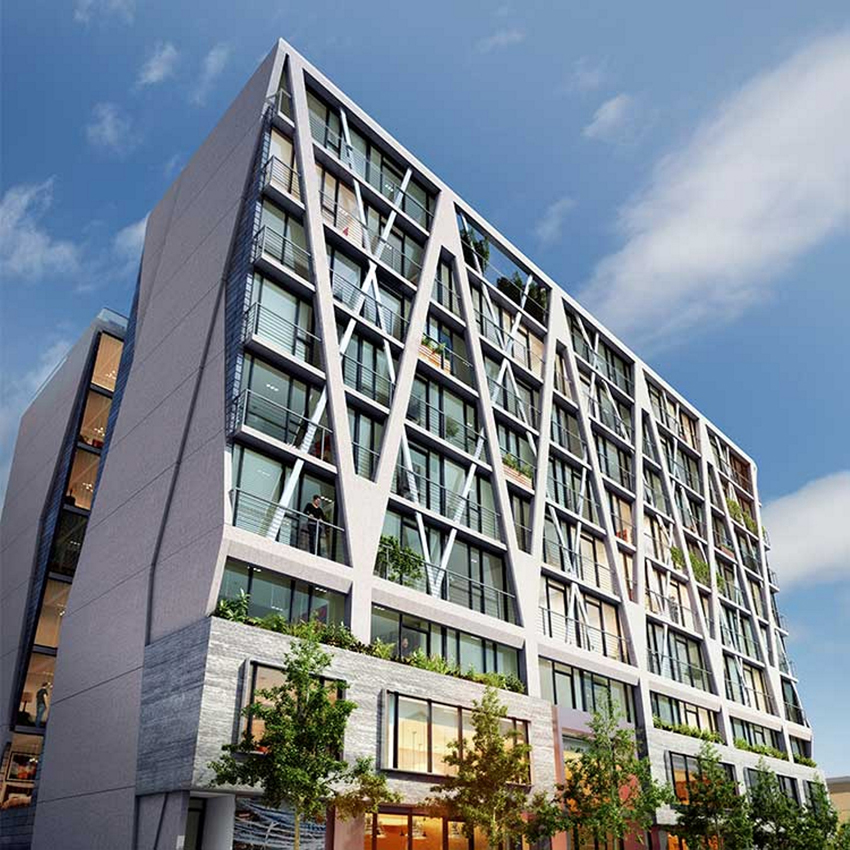Specifying Sustainable Concrete
Learning Objectives:
- Explain the difference between performance-based specifications and prescriptive specifications.
- Discover how performance-based specifications can improve performance and lower the environmental impact of concrete structures.
- Implement performance-based specifications in projects.
- Demonstrate the importance of balancing the structural and architectural performance of concrete with green building strategies.
Credits:
This course is approved as a Structured Course
This course can be self-reported to the AANB, as per their CE Guidelines
Approved for structured learning
Approved for Core Learning
This course can be self-reported to the NLAA
Course may qualify for Learning Hours with NWTAA
Course eligible for OAA Learning Hours
This course is approved as a core course
This course can be self-reported for Learning Units to the Architectural Institute of British Columbia
Sustainable concrete is difficult to define. There are many factors that can influence the way concrete is manufactured, designed, built, used, and recycled that ultimately affect the environmental footprint of the structures built with concrete. Whether one is designing a building, pavement, bridge, or dam, concrete is an important component used as foundation and superstructure, and these structures can have a significant impact on our environment throughout their life cycles.

All images courtesy of National Ready Mixed Concrete Association
Figure 1: Rowan is one of San Francisco’s newest and sleekest residential structures. It uses a giant, zigzagging concrete exoskeleton that stands out from other buildings. The exterior is for much more than show—it negates the need for interior columns, maximizing the interior space for residents. Concrete on the project used high volumes of fly ash to reduce environmental footprint.
Design professionals can influence the performance and environmental impact of structures through effective design and project specifications regardless of the materials being used. However, concrete is unique in that it is so versatile both in terms of physical characteristics (size, shape, appearance, etc.) and mechanical properties (strength, stiffness, permeability, etc.) that design professionals can influence quantity of materials used and optimize performance, including environmental impacts, of concrete and concrete structures significantly through design decisions and project specifications. For example, using a higher-grade reinforcement and higher-strength concrete for columns can reduce the section size and thereby the quantity of concrete and reinforcing steel. This results in more efficient and competitive designs, and the overall cost may be reduced.
A holistic approach is important. A focus on green construction should be appropriately balanced with maintaining (or not sacrificing) performance. Sacrificing performance may impact public safety (the intent of building codes) or require structures to be repaired or reconstructed at higher frequencies. This defeats the general purpose of sustainable development in the longer term.

Figure 2: The Wilshire Grand Center in Los Angeles uses a mixed concrete and steel structural system consisting of composite concrete and steel floors that span from an internal concrete core to perimeter concrete-filled steel box columns. Concrete for the 18-foot-thick mat foundation was kept cool by circulating chilled water in 90,000 feet of polypropylene hoses that were eventually filled with grout. Standing at 1,100 feet tall, the Wilshire Gran Center is the tallest building west of the Mississippi.
Prescriptive versus Performance Specifications
Specifications for concrete in construction documents establish project requirements where the contractor and material suppliers must comply. Project specifications that adhere to industry standard specifications, such as ACI 301: Specifications for Structural Concrete, generally applicable for buildings, are supportive of performance-based criteria and sustainable concrete construction and can be adopted by reference in a project specification. However, many project specifications incorporate additional, unnecessary prescriptive requirements that contradict ACI 301 and detract from both performance and environmental benefits.
A prescriptive specification imposes constraints on the concrete mixture proportions or means and methods of construction. Examples of prescriptive criteria include limits on the concrete mixture composition, such as minimum cement content, limits on the quantity and characteristics of supplementary cementitous materials (SCMs), maximum water to cementitious materials (w/cm) ratios, grading of aggregates, etc.
A performance specification outlines the characteristics of the fresh and hardened concrete, depending on the application and aspects of the construction process that are necessary. These requirements should not restrict innovations by the concrete producer or concrete contractor. Performance specifications should clearly specify the test methods and acceptance criteria that will be used to verify and enforce the performance criteria. Performance specifications should provide the necessary flexibility to the contractor and producer to provide concrete mixtures that meet the performance criteria.
The general concept of how a performance-based specification works is as follows:
- There is a qualification and certification system that establishes the standards for concrete production facilities and the people involved.
- The design professional would define the performance requirements of the concrete for the different components of the structure.
- Producers and contractors would partner to ensure that the right mixture is designed, delivered, and installed to meet the performance criteria.
- A submittal would document that the mixture will meet the specification requirements and include prequalification test results.
- While the concrete is being placed, a series of field acceptance tests would be conducted to determine if the concrete meets the performance criteria.
- There would be a clear set of instructions outlining what happens when concrete does not conform to the performance criteria.
The best example of a performance criterion is strength. By specifying compressive strength, a concrete producer can design a mixture to meet the strength criteria through experience and testing. The mixture proportions are not specified, just the target strength—leaving the product formulation entirely in the hands of the manufacturer. It permits the producer to develop a mixture that not only meets the strength requirement but does it economically, where it can minimize cement content, use supplementary cementitious materials (SCMs) such as fly ash and slag cement or other innovative technologies to reduce cost, improve performance such as workability and durability, and reduce environmental impact.
On the other hand, the best example of a prescriptive criterion is minimum cement content. This takes away the ability of the concrete producer to optimize concrete formulation. What we often see in a project specification is a specified compressive strength requirement in addition to a minimum cement content, and very often a contradictory maximum water-cement ratio. Generally, the minimum cement content requirement is much higher than what would be required to meet the specified compressive strength. This results in concrete that is more expensive (as cement is the most expensive ingredient in concrete), may be prone to cracking from high shrinkage or thermal effects, and increases the carbon footprint of concrete (since cement has a relatively high carbon footprint).















